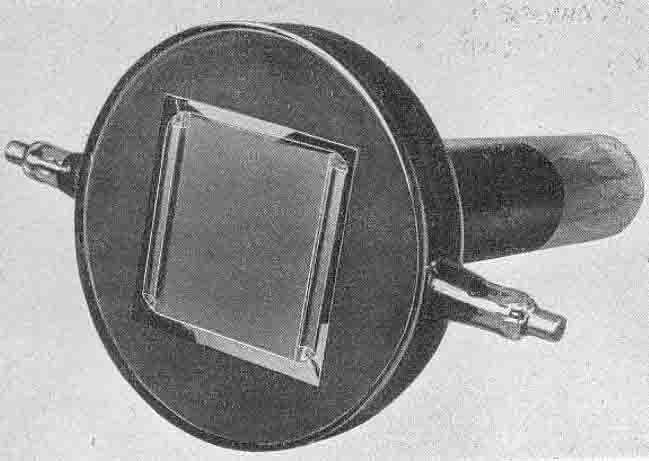LB 50 Blauschrift-Röhre
The Skiatron or Dark Trace Tube
and its Applications
by G. Wikkenhauser
of the Scophony Ltd UK
(pdf)
This paper deals with the storage ability of cathode ray tubes employing
an alkali halide screen.
This publication does not particularly refer to the Telefunken
Blauschrift-Röhre type LB50 we, nevertheless, may assume that the CRT shown is
equal to type LB 50.
In Germany Dr. Violet of Telefunken was responsible for the design and
application of Blauschrift-Röhren (= dark trace CRTs). In contrast to what is
pointed out in this article is, that they did not use it for PPI purposes
though, particularly for fast message storage as, for example, hand-written text
or that like.

Telefunken
Blauschrift-Röhre (Dark Trace Tube) type LB 50
Quite remarkably for a 1948 British publication, the author states
(p.22):-
The tubes developed and made in Germany approached to a greater degree, the
ideal shape of the time curve of the discoloration because heat was directly
applied to the halide screen to cancel the trace. The method was as follows: On
a thin sheet of mica a thin layer of tungsten film was deposited, thin enough to
be transparent to visible light, but at the same time electrically conductive.
The tube was not heated normally during the recording, but only when it was
desired to cancel the trace was a current passed through the tungsten film which
heated up quickly, thereby producing a temperature rise in the alkali halide.
According specification it was possible to achieve erasure, even of a very dark
trace, between 5 and 10 seconds. Fig. 5. shows a tube of this nature made in
Germany by Telefunken. The metal caps on the sides of the tube provide
connection to the tungsten film.
Back to:
Handbooks, papers and procuct information


